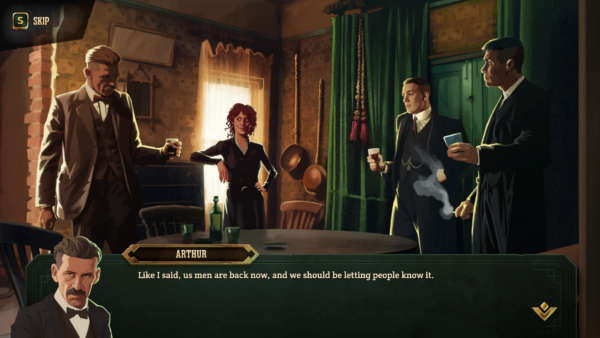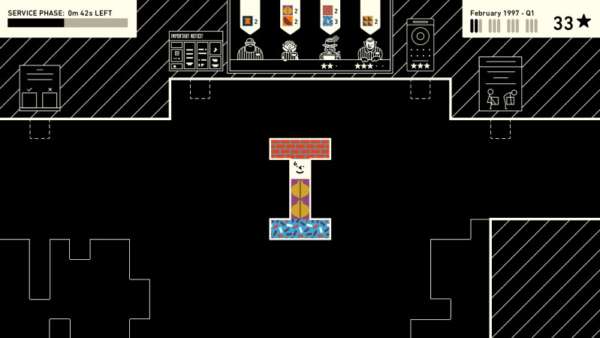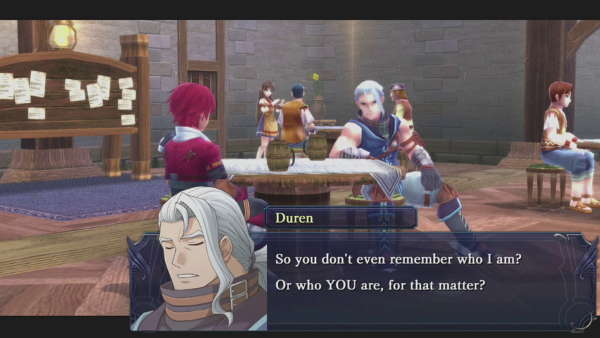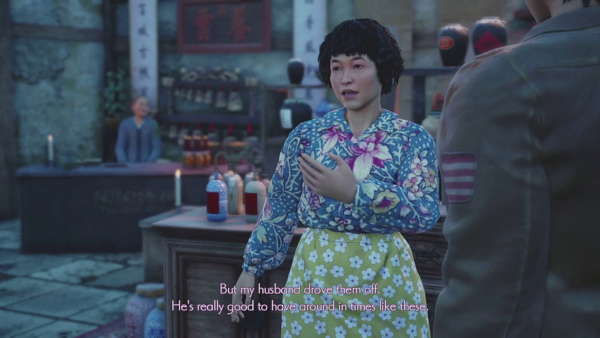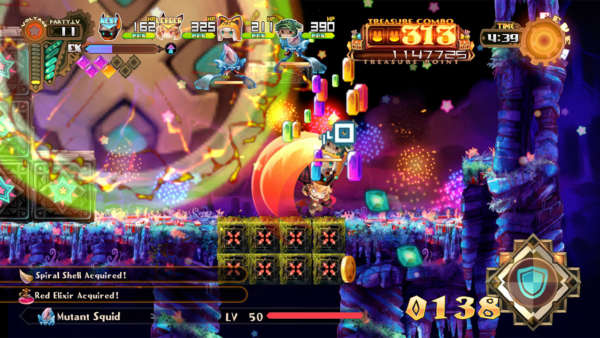Originally released on PC in 2012, Dustforce has now come to consoles. The PS3 and Xbox 360 versions update the game with new features; most notable is the inclusion of an online component to the multiplayer, which is almost a shameless love-letter to Super Smash Bros.
Dustforce is a 2D platformer developed by Hitbox Team, and sees players sweep up dust in a variety of ways and locations. However, this is no ordinary janitorial contract – dust will be on the walls, ceilings, floors, anywhere you can imagine. Luckily, through the use of speed, momentum and flow, you can run along these walls and ceilings, creating an addictive movement-based challenge.
Speed, momentum and flow. These are the key ingredients to Dustforce, and after a few minutes it quickly becomes clear that this is one of the better platformers to come along in a long while. Clearly influenced by the classic Mega Man X and Sonic games, Dustforce’s movement and speed mechanics make for a challenge that is as technical as it is rewarding.

Hitting a slope just right will net you a speed boost, which will often aid you in getting somewhere you otherwise couldn’t
You play as one of the titular Dustforce, a group of four janitors capable of stunning acrobatic feats. Surprisingly, there is no story to speak of in any real way. Upon starting the game, you’re chucked into the Nexus, which is essentially a level select, granting you access to a tutorial level as well as the four hub worlds – the Forest, Mansion, City and Lab areas. Each of the four areas contains doors leading to levels, and it’s up to you to find each level so you can beat it. Before long, you’ll be sliding down hills, running up ceilings and performing air combos on dusty denizens. All of this is incredibly addictive, challenging and fun, while never feeling stale – the level designs grow in ambition and complexity, and you’ll never feel like you’re repeating yourself.
 The art direction is also very pleasing – this sunset over a city is one of many good-looking backdrops
The art direction is also very pleasing – this sunset over a city is one of many good-looking backdrops
One of the key aspects of Dustforce is the combo meter. Killing an enemy or sweeping up dust (which is done by running over it) fills the meter, which grants you a screen-clearing super attack when fully charged. Often, large groups of enemies are placed at the end of levels to take full advantage of the super attack you built up, coolly switching to slow-mo as you emerge from the manoeuvre.

Dustkid’s triple-jump move trades off against her short-range attacks
The four characters – Dustman, Dustgirl, Dustkid and Dustworth – all have different quirks and features that differentiate them from each other. These differences are subtle, using the medium of gameplay to get them across to the player. Aside from looking different, the four janitors have different jump heights, dash speeds, slide speeds, attack hitboxes, and run speeds. The only way to truly appreciate the differences between the characters is to play each one, and to encourage you to do this, certain levels are made easier with certain characters. This adds depth to the game as you’ll want to try the different movement aspects of each character to find the best one for each situation.
Another mechanic which adds a tonne of depth is the way double-jumping works. Pressing jump in the air will let you jump again, but killing an enemy in the air will “reset” your double jump, allowing you to jump yet again. This allows for some excellent set-pieces and even some hair-raising moments as you use enemies as stepping stones to stay in the air for whole minutes, sometimes whole levels.

Enemies become conduits; sometimes the only way forward is to chain air kills
So, what’s the point then? With no story or real plot to speak of what’s the reason to play? That question is answered by the presence of keys. These keys are unlocked by doing well in levels, which in turn unlock harder levels. This is where the one of the most important aspects of Dustforce comes in.
Upon completion of a level, your performance is judged on two categories: Finesse and Completion. You can be graded from D all the way up to S in each, with Finesse being rewarded if your combo was never broken, and Completion being judged on how much of the dust you swept. Doing a level without dying, without breaking the combo, and without missing any dust nets you the coveted SS for that level. Once you reach a ranking of SS for every level in the game, an “endgame” actually unlocks itself in the Nexus, with a climactic set of challenges for you to undertake.
Once you realise that achieving SS on every level is the meta-game, you’ll want to get to work. Hitbox Team took this into careful consideration and have tailored this experience to be as challenging as possible while not being frustrating, and they have succeeded in doing so. Restarting is quick and easy, and the load times are instantaneous. If you’re just trying to get through a level, the checkpoints are numerous and generous – the game wants you to get to the end of every level, but the real challenge is the elusive SS rank. Even the soundtrack was carefully constructed around the idea of replaying any given level over and over to improve rank.

Some levels take place inside a silhouetted Tron-esque world, which are accompanied by a suitably old-school music track
If you get stuck, you can watch a replay of your performance in the level to see where you could improve, but Hitbox Team have included an option to view the replays of the top-ranked players on the leader board. Witnessing how these players achieved these insane SS runs using the game’s physics engine and mechanics is a testament to both the addictive nature of the game and the competency of its design and programming.
Dustforce has an excellent collection of original songs. A unique blend of ambience, driving Dubstep-style beats accompanied by incredibly chilled out melodies (apparently called Chill-step) make for a memorable collection of songs, while also serving not to annoy you – the track doesn’t restart when you try again, meaning you won’t be distracted from your SS attempts.
You could end up listening to the track “Cider Time” on a loop for hours while trying to get the SS on the Hideout level, but you won’t care as it’s deliberately minimalist so as not to detract from this process. The fact that the developers treated the game’s music as a design choice as well as an aesthetic one is commendable.
Upon completion of the game, there isn’t much to do except maybe try to achieve SS on the final set of levels, after which you really have beaten Dustforce. There are a few secrets to find which are more like easter eggs rather than anything meaningful, but aside from proudly gawking at your SS ranks, you’ve seen all there is to see. Bear in mind it could take 20 hours or more to reach this point; achieving the SS on every level in the game is not for the faint of heart.
Dustforce is one of those games where the only barrier to progress forward is your skill – once you get good, you can get the SS ranks on each level, and unlock the elusive red keys. A simple combat system and simple movement mechanics embody the old adage of “easy to learn, difficult to master”. If you’re looking for a platformer that has speed, skill, replayability, and personality, then Dustforce is the game for you.
